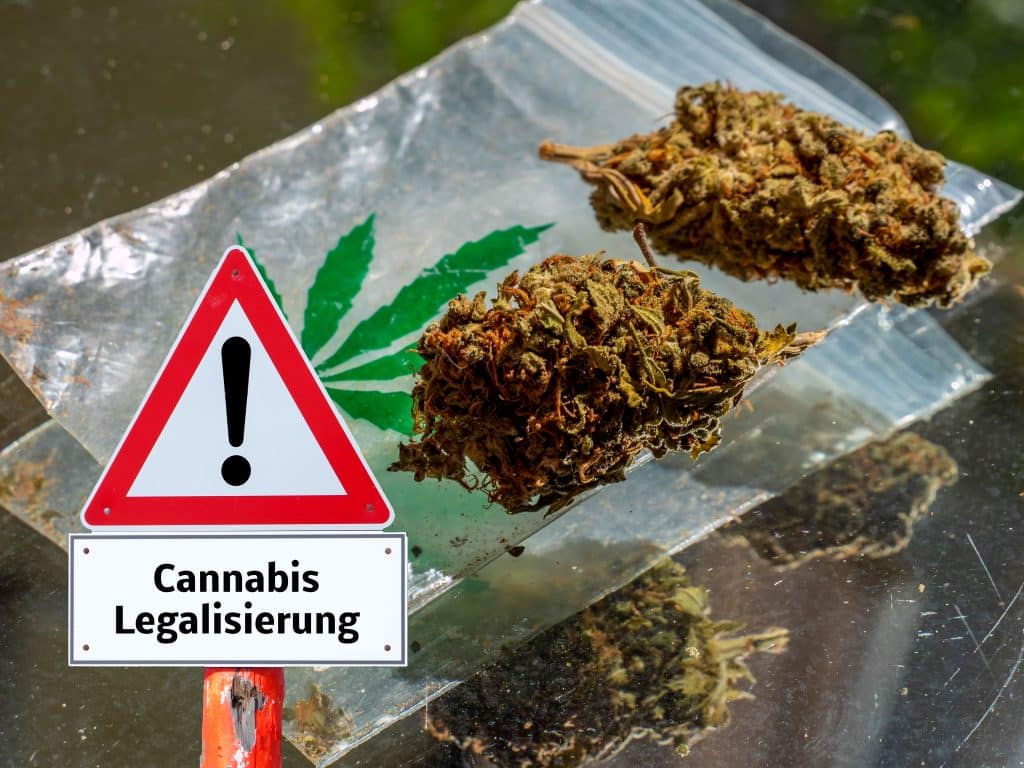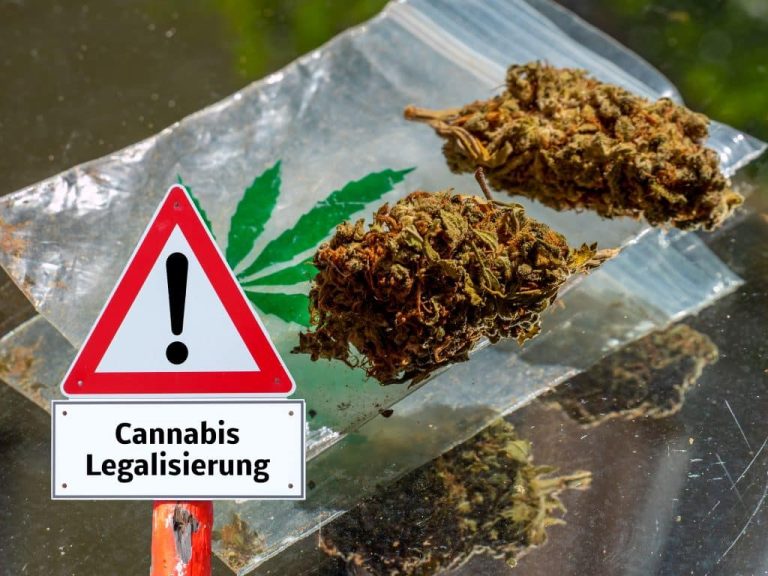It’s been a roller coaster for the European country. First, it brashly announced its intention to legalize cannabis, complete with draft legislation. Then it got knocked back to reality by the EU, which did not approve its plan. Now, upon bowing to that need for approval, Germany changed its plan, and is no longer going for a full legalization. Instead its now thinking of a middle ground answer. Read on to find out what the new weed-friendly Germany is likely to entail.
The news that Germany will not have a full legalization
Health Minister Karl Lauterbach didn’t say much right before Easter, only that we would likely have some kind of answer right after the holiday. Already ideas had been flying around of social clubs and home growing only, possibly even a trial program akin to Switzerland. Now, just a few days after the holiday, we finally have some clarity on Germany’s intentions.
On Wednesday, April 12th, the German government announced that in lieu of a full legalization, the country would allow self-cultivation and personal use, all for private use. It also wants to institute a club-like structure (much like Spain), comprised of non-profit member’s clubs to obtain the drugs in place of actual sales.
The point of the clubs is to get around direct sales. In this setup, residents pay a member fee to be in a club. That fee covers the weed cost, making for a system similar to gifting; in that it doesn’t require direct sales, or the regulation of a sales market. Germany officials say all this will happen by year’s end.
The new law (should it get written and approved) is actually a two-part endeavor, with home use and growing, and social clubs making up the first part. The second part will mirror Switzerland, and include a five-year period wherein different cities or locations can set up licensed ‘specialist shops’, which sound like dispensaries; where a person can legally buy recreational weed. This part is considered a pilot program. When this part starts isn’t yet known.
Thanks for being here. Check out the Cannadelics Weekly Newsletter to get updates, as well as cool offers on tons of stuff like: cannabis buds, vapes and smoking equipment, edibles, cannabinoids (including delta-8), amanita mushroom powder, and a whole lot more. It’s okay to feel good, come get what you need!
Said Lauterbach of the change from the original idea that Germany would have a full legalization, complete with licensed stores throughout the country, “The previous cannabis policy has failed. Now we have to go new ways.” This failure of the original idea wasn’t a failure in planning or ability, but rather a rejection of the plan by parent body, the European Union.
What will Germans be able to do?
Now we know there will likely be a two-part system instituted, which brings Germany that much closer to a full legalization; but not quite, and certainly not all immediately. The idea of shops opening soon and an open market are simply not on the table, so this revised edition seems to be the best that the country will offer.
In terms of the social clubs, they’ll allow for community cultivation and dissemination. Each club would be limited to 500 people (or something like that). All members must be German residents. These residents will have the ability to get (but not purchase) cannabis in amounts related to age. The 18-21 crowd can get the weed, but is limited to 30 grams a month. Adults 21 and above will have a higher monthly limit of 50 grams, with a 25 grams per a day limit. These won’t be venues for social smoking, and it will be illegal to smoke in any of these clubs.
As membership fees would cover the cost of the product, it brings up the question of how the fee is calculated. In terms of how much members would pay, this is directly related to how much a member smokes. Otherwise, a flat rate might mean someone smoking way more, pays the same amount as someone smoking way less. Under the new idea, the fee would be staggered based on the amount an individual uses; and each user would only be allowed one club for membership.
For those who prefer not to use the clubs, and grow the plant on their own, they’ll have a maximum limit of three plants for self-cultivation. How will these home-growers get what they need? Through the clubs. Each grower will be limited to up to seven seeds or five cuttings every month, directly from the cannabis clubs. According to Agriculture Minister Cem Özdemir, the legislation for this part should be written by the end of April.

As far as the second phase, we don’t know much right now. Lauterbach said the basics of that part won’t be established until after the government’s summer break. We therefore don’t know when to expect it to start, or what cities and other locations will take part. What we do know, is that it will allow for a certain amount of controlled commercial selling.
While all this clearly indicates the people of Germany will have to wait for a full legalization, the country intends to get what it does has planned, started as soon as possible. Says Özdemir, “The cannabis project is taking the next step today so that cannabis use will become legal this year.” It should be remembered, however, that nothing is passed, and until something is written and approved, these are just ideas.
So, what exactly happened to get here?
Germany announced plans to legalize cannabis and open a recreational market, last year. First, Justice Minister Marco Buschmann said he was working with the Ministry of Health to create a legalization process. That process of figuring out, started last summer. This was echoed by Finance Minister Christian Lindner via Twitter, who said cannabis would be legal soon, and the country was currently looking into how to get it done.
Then in early May, Lauterbach confirmed his own support for the cause, saying at the time: “I’ve always been opposed to cannabis legalization, but I revised my position about a year ago.” And it was Lauterbach who submit the initial draft legislation in late 2022. The draft reforms described an industry where adults could buy cannabis in licensed dispensaries, with a max of 20 grams. It also allowed for home growing.
But then the issue of the EU reared its head. Germany is its own country, but it is a part of the larger conglomeration of the EU; which acts as a parent body to its included states. The EU has its own regulations, overseen by the EU Commission; like that cannabis above .3% isn’t legal for recreational purposes. Beyond that, the EU has to deal with other member states, and any lawsuits they may bring if the EU allowed Germany its original plan.
Internationally, the EU has contracts with other countries concerning the production and sale of illegal drugs. Which means its not just a matter of whether the EU is cool with the idea, but how many issues it faces legally by allowing something like this. While maybe this is all an excuse in the end, unless Germany wants to leave the EU over cannabis policy, the EU can, and did, block Germany from its original plan. And this led to Germany watering down from a full legalization, to the structure mentioned above.

As the first part of this two-part setup doesn’t require EU approval, Germany is set to go with its limited legalization once legislation is determined and approved. The pilot program has no details attached at the moment, but came out of the EU Commission’s comments and concerns, which means it will likely be built to accommodate these comments and concerns. As of yet, nothing is finalized for either part of this two-part plan.
When looking at it realistically, perhaps Germany shouldn’t have made such big statements in the beginning. It even speaks to the idea that the German government wasn’t working within the world of reality; as perhaps it should have known its boundaries better. After all, it’s hard to imagine that a bunch of legislators, didn’t see this coming.
Conclusion
The understanding that the original draft plan wouldn’t pass EU hurdles was understood earlier on by some legislators. Others wanted to push forward regardless of the EU, and allow Germany to set its own standard. It’s not shocking that the former group was more on point. Maybe the EU didn’t have a roadmap for what to do in this situation; but without a complete turnaround in federal legislation and international deals, this all went in a predictable way. Perhaps Germany itself should have predicted the situation better.
Welcome readers! Thanks for making your way to Cannadelics.com; an independent new site here to bring you the best in cannabis and hallucinogen reporting. Come around daily to stay informed on important events; and sign up for the Cannadelics Weekly Newsletter, so you’re never late to get the news.
